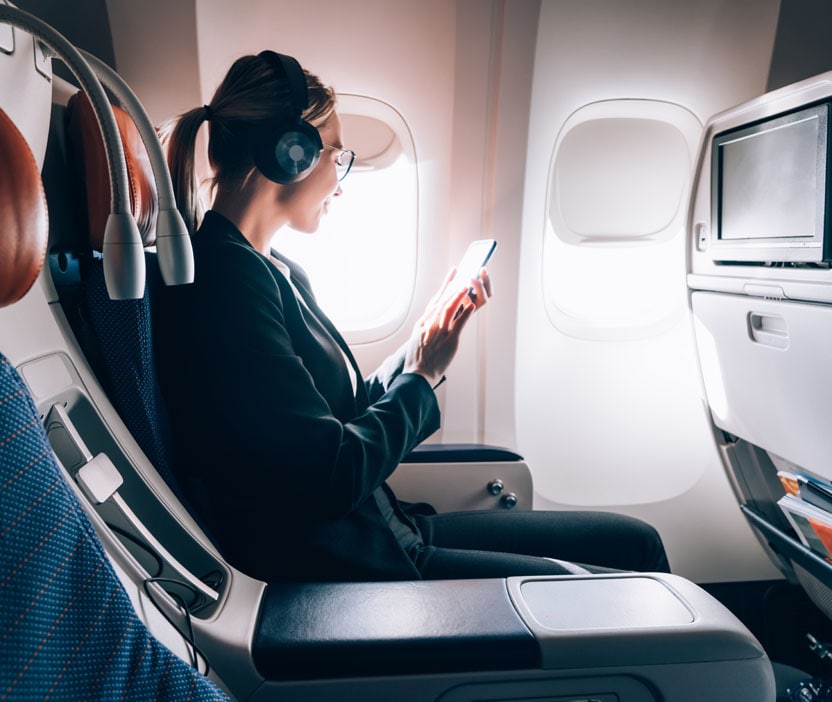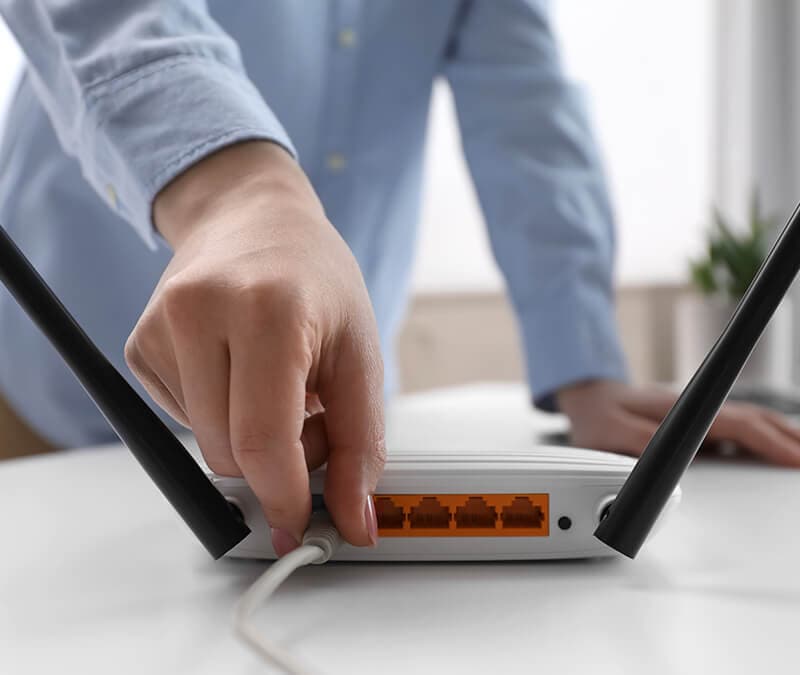How to speed up Wi-Fi in airplanes
Airplane Wi-Fi driving you insane? Read on to learn why it’s so slow, and how to fix it.

When traveling in a pressurized cabin about 35,000 feet above the ground, one doesn’t give much thought to the engineering marvel that is the aircraft. Airplanes defy gravity and challenge physics. Yet these amazing feats don’t get much attention. What most passengers are concerned about is the Internet connection in these magnificent machines — and a slow one can infuriate the most patient traveler.
Thousands of people go to work each day to make the machinery behind air travel better each day. The airline industry is constantly evolving and introducing new technology to attract more customers. In recent years, one of the services added to air travel was in-flight Wi-Fi.
Technically, it’s an excellent thing to have. With in-flight Wi-Fi there are more passengers carrying out their business, updating social media statuses, watching movies, and focusing less on the length of the flight and other discomforts that come with the journey.
How in-flight Wi-Fi works
Depending on the technology behind in-flight Wi-Fi, passengers’ experiences vary. The air-to-ground (ATG) system is similar to the technology that delivers wireless Internet connectivity to our smart phones. This system uses an antenna attached to the aircraft that picks up signals from nearby towers and transmits it to the device.
A more recent version of in-flight Wi-Fi is satellite technology. Receivers placed on the top of the aircraft capture the signals from satellites and transmit to devices like radio transmitters, modems, and distribution systems that split the bandwidth among consumers. These signals are not inhibited by geographical locations or weather constraints, and they have the capability to provide extra broadband compared to the ATG system.
Some airlines are now using a new technology that uses Ka-band with a satellite antenna that is capable of providing up to 100 MHz of bandwidth to a plane. This enables passengers to stream videos and play games.
Why so slow?
One of the main reasons for slow Wi-Fi in airplanes is that only 3 MHz is shared with hundreds of passengers, while a typical home has 20 to 160 MHz shared with the few inhabitants of the home. With the proliferation of devices, almost every passenger has one or more devices that are capable of connecting to the Internet.
With the plane travelling at about 550 mph, it becomes a little difficult for the ATG antennae to switch signals rapidly. To overcome this issue, antennae are designed with multiple prongs to catch signals as the plane moves. However this design causes a resistance in the aerodynamics of the aircraft. This translates into more fuel cost, and thus more operating cost.
Moreover, the ATG system provides about 5 Mbps per second per aircraft. That is a very small amount of bandwidth to be shared among hundreds of passengers. Also, the ATG system could go out of range on long flights that go over fewer receiving towers or more bodies of water.
Speed up the Wi-Fi in the sky experience
Yes, airplane Wi-Fi is slow. But sometimes, it could be your device that adds to the slowdown.
Here are a few tips that you can use to speed things up a little.
1. Make sure all the apps are updated before you connect to the Wi-Fi. Or turn off background updating for apps. Some apps are set up to start updating on Wi-Fi only. These will carry out their work in the background while taking up precious data.
2. Disable photo backup. Photos are notorious for taking up a lot of bandwidth while backing up.
3. Download all music and movies before you get on your plane. Streaming could cost you a lot.
4. Take a look at your settings and make sure your phone doesn’t carry out tasks assigned while only on Wi-Fi.
5. Disable all browser extensions and apps that regularly access the web, such as maps, weather, and more.
6. Avoid opening too many tabs at once. Use only one tab at a time. Having too many tabs open puts a strain on the connection.
7. Visit any site you may want to view on the flight before you connect to the Wi-Fi on the plane. Doing so will cache locally and may save some download time.
Precautions on airplane Wi-Fi
Whether on the ground or in the sky, hackers may be hiding in plain sight among us. Most airplanes’ Wi-Fi comes with the same risks you run using public Wi-Fi in café or a hotel. Hackers can snoop on your email, social media accounts and other websites you visit while using in-flight Wi-Fi.
Here are a few tips to keep in mind before you jump on public airplane Wi-Fi
1. Do not assume that a plane’s Wi-Fi is secure. Hackers can use software on their phones to gain access to your device and steal your password.
2. Even if the Internet connection is secure, the websites you visit may not be. Use a robust security system for your phone, like Norton Mobile Security.
3. Using a VPN will mitigate most risks. A VPN like Norton VPN will take all the information that is coming and going from your devices and encrypt it.
4. Disable Bluetooth and other sharing apps.
5. Log out of accounts before closing the browser.
6. Use your instincts. Always assume that you are being watched and keep your guard up.
Editorial note: Our articles provide educational information for you. Our offerings may not cover or protect against every type of crime, fraud, or threat we write about. Our goal is to increase awareness about Cyber Safety. Please review complete Terms during enrollment or setup. Remember that no one can prevent all identity theft or cybercrime, and that LifeLock does not monitor all transactions at all businesses. The Norton and LifeLock brands are part of Gen Digital Inc.





Want more?
Follow us for all the latest news, tips, and updates.